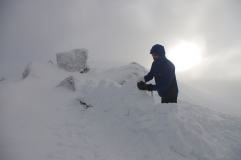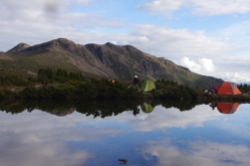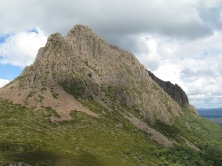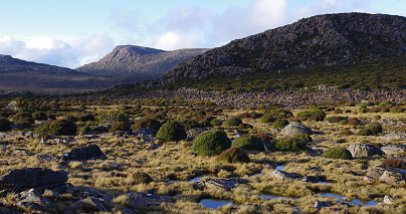In recent days there have been several reports of large avalanches occurring on the western slopes of the Main Range of the Snowy Mountains, in places like Watsons Crag and the Sentinel Peak area. These highlight the risks of skiing and riding on these large and often steep slopes and act as a reminder that, yes, avalanches do occur in Australia.
They may also be pointing to something else. Is this part of the future of backcountry skiing and riding as climate change kicks in?
Background
Mountain Safety Collective (MSC) is the go to group when it comes to avalanches in Australia. In a recent report, Craig Sheppard and Alex Sinickas, from the MSC Forecast Team, write that:
(There has been ) ‘Another wet slide to ground – with site & debris observed yesterday looking south from Mt Anderson by Thomas Jamieson and friends. Looks like it is on what we know as Subsidiary Ridge between Watson and Siren Song drainages’.
‘We have seen a massive glide crack here before, but not at this time of the season. Probably occurred as a result of the rain and warm conditions in late June, and looks similar to the slides seen on the Sentinel.’
They also note that:
Three large avalanches were reported to MSC on Tuesday 28 June, 2022. The avalanches occurred in the Main Range of NSW in the Sentinel Peak area.
What’s going on?
As Craig and Alex note in their report,
‘As we discuss in the conclusion, rain with warmer (+0º) temperatures creates stress on the snowpack and means it’s time to avoid avalanche terrain’.
As skiers and boarders will remember from last winter, when overall temperatures are warmer than usual, it doesn’t take much to lose snow base when there are sustained rain events. Victoria was especially hard hit last year, with loss of the entire base in July after a reasonable start to the winter in June.
As snow pack declines overall and warming continues, we will continue to have boom and bust cycles, where we get rain washing the snow pack away, followed by big dumps of snow. This can bring its own problems, as was shown by a late season avalanche at Mt Hotham in 2020, when rain had washed away much of the snowpack and a subsequent heavy snowfall landed mostly on exposed and wet grass.
These rain events can also impact snowpack stability where the base survives the rain, leading to slides.
Australia has warmed about 1.4oC overall since about 1910 (slightly above the global average of warming of 1.1oC). Every Australian skier and rider knows that our snow is borderline as it is, and we all know the difference that 1oC can make, shifting from glorious snow to the misery of rain. Under current trajectories, global warming is likely to pass 1.5oC between 2030 and 2052. We know that climate change is already driving sharp increases in both the frequency and severity of many extreme weather events, including heavy rain events. As we approach the 1.5oC milestone, we must expect greater climate variability, which will include more erratic weather, including boom and bust snow cycles (big dumps of snow followed by rain which then impacts on snow pack). This is exactly what has happened so far this season: early and wonderful falls in June, which led to an unconsolidated base, which slowly transitioned to a stable base. Then warmer conditions with sun and rain, which now appears to be causing slides. As Craig and Alex put it, ‘rain with warmer (+0º) temperatures creates stress on the snowpack’.
Yes. This is depressing.
We need to keep chasing the pow and getting out into the mountains.
But we need to work harder to bring about change, to influence our governments to do more to respond to the immediate threats of climate change.
Get active. Stay active. Join a group (for instance Protect Our Winters), sign the POW petition to the prime minister, get active in a local campaign.
And be safe in the backcountry.
You can read the MSC analysis of the recent slides here.
HEADER IMAGE: from MSC website. ‘Screenshot of Google Earth: Looking west at the South Chutes, Sentinel slides 1 (Yellow), 2 (Orange) and 3 (Green). Pink line shows the possible extent of the avalanche flow, however the actual distance is unknown’.
























































Leave a comment